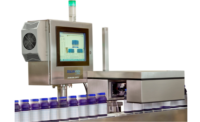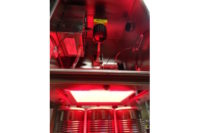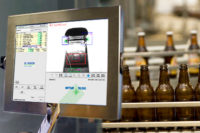Inspection/rejection capping solution achieves rates greater than 900 bottles per-minute
This failsafe inspection/rejection system is ideal for companies looking for 100 percent assurance caps have been applied properly.

Fowler Products (FowlerProducts.com), powered by Pro Mach, Inc. (ProMachInc.com), introduced today its highest speed inspection/rejection system for capping applications – the system can cap and inspect more than 900 bottles per minute. Fowler’s unique approach to failsafe inspection/rejection is designed for pharmaceutical, personal care, and food companies seeking verification that every cap is properly applied.
In Fowler’s approach to inspection/rejection, bottles failing inspection are shunted off to a reject lane before they leave the capping machine. This assures that the bottle identified to be rejected is absolutely the bottle that is rejected. Furthermore, Fowler’s unique design gently diverts a rejected bottle off to a reject lane so that the bottle remains upright and does not spill its contents contaminating the packaging line.
“Because the system is integral to the capping machine, we can absolutely assure customers that the proper bottle has been rejected,” says John Artman, vice president of sales for Fowler. “The bottle identified as failing one or more quality conditions remains in positive control all the way from its station within the machine to the reject lane.”
The failsafe Fowler system rejects bottles for improper torque, missing cap, high cap, and/or cocked cap. The system also rejects bottles if the under-cap liners are missing. Every bottle must pass these quality checks before it is allowed to leave the machine.
Electronic torque control, machine vision, and various other sensor technologies are used in the inspection portion of the system. With failsafe logic, even the sensor hardware is monitored for proper functionality. Using failsafe logic, all bottles are tagged as “faulty” entering the machine and each inspection criteria must be satisfied as “good” before the system will allow a bottle to be discharged from the machine to the next downstream operation.
The breakthrough in speed is the result of utilizing state-of-the-art linear motors for high velocity, precise motion actuation of the multi-finger rejection portion of the system. The linear motor actuators smoothly guide the bottle to the rejection lane without holding up or otherwise interfering with the bottle next in line. “This incorporation of linear motors in place of previously used pneumatic cylinders has allowed us to reach a new level of performance in speed and accuracy,” says Artman.
Looking for a reprint of this article?
From high-res PDFs to custom plaques, order your copy today!






